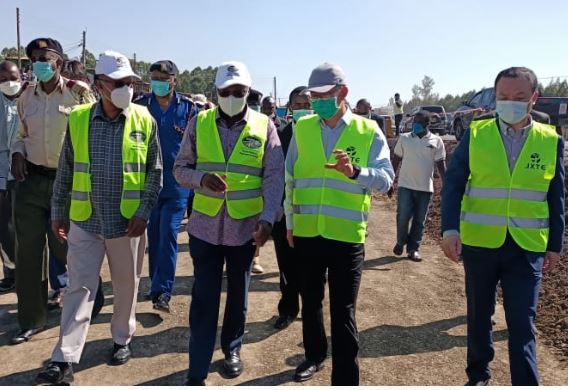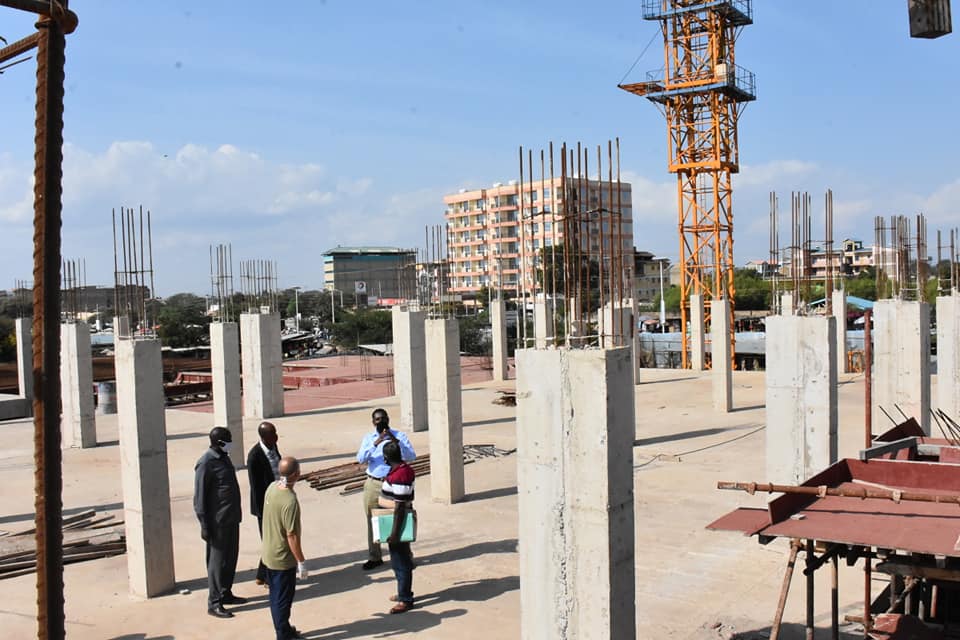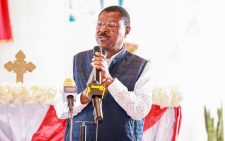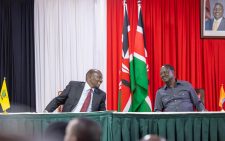Ten projects conceived to spur Kenya’s economy bigly
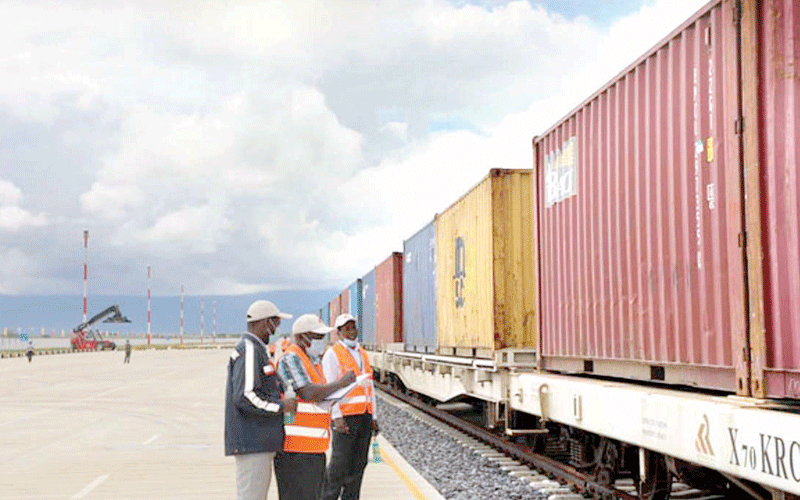
As East and Central Africa’s largest economy, Kenya’s strategic position that includes 1400 km of coastline and the region’s biggest and busiest port makes the country a critical lifeline for regional trade, however, these mega projects continue to excite local economies as outline here:
LAPPSET
The Lamu Port South Sudan Ethiopia Transport (LAPSSET) corridor represents Kenya’s largest infrastructure undertaking. Identified as a critical macro-enabler under Vision 2030, it aims to reduce dependence on the Northern Corridor road network through creation of a second transport corridor, as well as a new hydrocarbons export channel for Kenya, South Sudan and Ethiopia, while enhancing connectivity between Lamu, Isiolo, Juba and Addis Ababa.
Conceived in 1975, but held back for years due to financial and political constraints, the establishment of Vision 2030 brought with it a renewed focus on LAPSSET.
The project was to add 3 per cent to spur Vision 2030’s goals of achieving 10 per cent GDP growth annually by 2030.
Airports
Air Transportation upgrades are a key pillar of the Vision 2030 economic development plan worth a combined $285 million (Sh31 billion).
This includes transforming JKIA into a regional hub via expansion and modernisation of existing airports, including facilities in Mombasa, Kisumu and Eldoret.
This also included modernising and upgrading the Ports to international standards. JKIA is the busiest airport in East and Central Africa and is the 7th busiest on the continent.
Originally built to serve 2.5m passengers annually in the 70s, the modernisation and expansion program has seen capacity increase to 7.5 million.
Rehabilitating road networks
Over the last ten years, the government has spent in excess of Sh1 trillion Kenya shillings for the modernisation and construction of its road networks.
This has increased the country’s road network to more than 160 thousand kilometers from less than 60 thousand kilometres ten years ago.
The extent of unclassified rural and urban roads remains in the 80,000- to 130,000-km range, and the road inventory and condition survey (RICS) determined that at the time the road network totalled 160,866 km, of which 11,189 km were paved and 149,689 km unpaved.
The Kenya Roads Board reported that 17 per cent of roads are classified as good, 51 per cent fair and 31 per cent in poor condition, while unclassified roads are in urgent need of rehabilitation, with 5 per cent classified as good, 22 per cent fair and 72 per cent in poor condition.
Public Private Partnership funded projects
Other than levies and donor funding, Public Private Partnership (PPP) initiatives are the most promising ways of expanding roads in a timely fashion, according to the Kenya government.
PPPs under build-operate-transfer, design-build-operate, and design-and-build models are targeted for road construction projects.
In Kenya’s priority list includes several Nairobi bypasses, as well as highways linking Mombasa to Nairobi and Malaba, and Mau to Summit, Kisumu and Busia.
There are plans to outsource the management of two such projects to private contractors under long-term operation and maintenance concessions. The concession arrangements will be funded via toll stations.
Metre gauge from Mombasa to Kisumu
Kenya’s rail corridor holds significant strategic regional importance. Linking the Port of Mombasa to Nairobi and stretching onwards into Uganda, the network could be a key conduit for bulk freight, easing pressure on the road network and providing additional capacity along the northern corridor.
Unfortunately, as with so many railways in Africa, its infrastructure has deteriorated over the years, but the government has started re-opening this network.
Opening the country’s ports to well-developed rail lines could therefore have a dramatic impact on transit times and help regenerate economies such as Nakuru and Kisumu.
This already existing infrastructure is set to bring about the much needed boost.
SGR
SGR project is one of the largest of its kind in sub-Saharan Africa, and the country’s biggest infrastructure project to date.
It included construction of 700 km of standard-gauge track, 33 stations, and dozens of wagons and locomotives.
The first phase of the project, the Nairobi-Mombasa segment, is expected to be completed in 2017 and will create some 30,000 jobs.
Earlier estimates pegged the project’s total cost at Sh447.5billion the majority of which will be financed by the Export-Import Bank of China, while the Kenyan government is expected to contribute the rest.
In May 2014 the government finalised its finance agreement with the Export-Import Bank, inking a Sh327billion deal that saw construction commence in October 2014.
The government, meanwhile, has allocated Sh26.22 billion to railways in its 2014/15 budget, and moved in October 2013 to introduce a 1.5 per cent levy on all home-use imports to help fund the SGR project, under the Finance Act of 2013.
Nairobi Commuter Links
Rail developments within Nairobi are also anticipated to reduce congestion and improve public transport and daily commutes. Kenya’s first urban railway project, the Nairobi Commuter Rail system, was officially launched by the KRC in 2009, and involved rehabilitating 167 km of existing rail systems, as well as the construction of a new line to JKIA.
Kenya Railways has invested Sh1.5 billion on the service KENYA Railway Corporation (KRC) began operation of five metre-gauge class 61 DMUs on the Nairobi Commuter Network (NCR) on November 10.
The trains will be used to expand capacity on the four commuter lines which radiate from Nairobi’s Central Business District to Syokimau, Ruiru, Embakasi and Kikuyu.
Port of Mombasa
The Port of Mombasa is Kenya’s principal seaport, comprising Kilindini Harbour and Port Reitz on the eastern side of Mombasa Island, and the Old Port and Port Tudor north of the island.
The Port of Mombasa serves landlocked EAC countries, including Uganda, Rwanda, Burundi, DRC and South Sudan with now the Port of Kisumu nearing completion.
Kilindini is a naturally deep and well-sheltered harbour where most shipping activities take place, holding 16 deepwater berths with 13.25-metre draughts, two oil terminals and anchorages for sea-going ships.
The Port of Mombasa recently completed Phase 1 of the Mombasa Port Development Project which included construction of a second container terminal, three additional berths, two ship-to-shore cranes and four rubber-tire gantry cranes.
Japan has allocated an additional $500m (Shs590 billion) for implementation of the two phases.
Turkana Wind project
Lake Turkana Wind Power worth Sh70 billion with a total capacity of 310 megawatts is the largest wind park on the Africa continent and the biggest single private sector investment in Kenya’s history.
Finnfund invested in Lake Turkana Wind Power in 2013. The objective of the project is to provide reliable and low-cost energy to the Kenyan population, LTWP is estimated to increase Kenya’s electricity generation capacity by 13 per cent and reduce the need for expensive and polluting thermal (fossil fuel) plants.
Naivasha Dry Port
The Sh6.9 billion Naivasha facility will provide storage of cargo especially those destined for Uganda, South Sudan, Northern Tanzania, Rwanda, Burundi and Democratic Republic of Congo.
This will relieve the Mombasa Port of congestion, create more space for handling more cargo, and improve efficiency and attract more trade including transhipment business at the Mombasa Port.
Once completed, it will handle more than 20 per cent of the cargo coming through the Mombasa Port, as part of this will be taken to Naivasha for storage and help reduce congestion at the Mombasa Port.
The Naivasha dry port is the fourth to be established in Kenya. Nakuru County government plans to establish an industrial park within the geothermal-rich area of Olkaria where the dry port will be set up.

